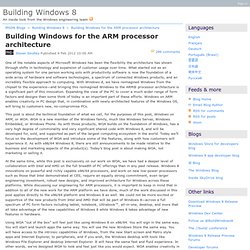

Intel's Medfield & Atom Z2460 Arrive for Smartphones: It's Finally Here. It's here.

Intel's first smartphone SoC that you'll actually be able to buy in a device before the end of the year. The platform is called Medfield and Paul Otellini just announced its first device partners. Medfield starts out as a bonafide mobile SoC. Whereas Moorestown was a "two-chip" solution, Medfield is just one - the Penwell SoC: The SoC is only available in a PoP (Package on Package) configuration measuring 12mm x 12mm. Since I know the measurements of the package I could estimate the dimensions of the silicon itself.
There's only a single version of Medfield being announced today: the Intel Atom Z2460. Although running what appears to be a stock Gingerbread browser, Intel's Medfield reference platform posts SunSpider performance better than any other smartphone we've tested - including the Galaxy Nexus running Ice Cream Sandwich. Medfield isn't a one trick pony either, performance is similarly dominating under BrowserMark: These are tablet-like scores. Mirror: The Coming War: ARM versus x86 » Van's Hardware Journal. Note: This report was originally published at Bright Side of News* on April 8, 2010.

After their server crashed, BSN* has not yet been able to recover the article after several weeks. We are reposting the report here to serve as a mirror of the original article. There are likely to be minor editing differences with the BSN* article. Note 2: Only a month or two after it was published, a detailed report that I wrote was wiped out during a BrightSideOfNews* hard drive crash. That exhaustive report, praised by many throughout the industry as the finest of its kind yet produced, examined the emerging and inevitable ARM versus x86 clash. It took a little while and cost BSN* a lot of money to recover the data on the hard drive, but that report is now back up and can be read here. I’m currently working on a followup to that bit of analysis that will include even more hardware than the initial report.
Introduction. Why You’ll Probably Never Own A Mac With An ARM Processor [Feature. Image via Ars Technica Ever since Apple launched the new MacBook Air, analysts and Mac fans alike have gone wild speculating that Cupertino might dump Intel and use custom-made, ARM-based chips in their laptop line instead.

Yesterday, more fuel was thrown on the fire when it was revealed that an Apple intern worked on porting OS X to ARM devices back in 2010. Even Intel has said it would be “remiss” of them to dismiss the possibility that ARM might steal their Apple business. On the surface of things, it looks like ARM might make its way to our MacBooks soon. Is ARM really a threat to Intel? Where ARM’s Power Efficiency Comes From For most people, it’s not immediately clear what makes the chip inside your iPhone (an ARM-based chip made by Apple) different from the processor inside your MacBook Air (an Intel chip). All other things being equal — and as we’ll see later, all things are not equal – the main advantage ARM chips have over Intel ones is power management.
Think of it like this. Building Windows for the ARM processor architecture - Building Windows 8. One of the notable aspects of Microsoft Windows has been the flexibility the architecture has shown through shifts in technology and expansion of customer usage over time.

What started out as an operating system for one person working solo with productivity software is now the foundation of a wide array of hardware and software technologies, a spectrum of connected Windows products, and an incredibly flexible approach to computing. With Windows 8, we have reimagined Windows from the chipset to the experience—and bringing this reimagined Windows to the ARM® processor architecture is a significant part of this innovation. Expanding the view of the PC to cover a much wider range of form factors and designs than some think of today is an important part of these efforts. Windows on ARM enables creativity in PC design that, in combination with newly architected features of the Windows OS, will bring to customers new, no-compromise PCs.
Working with partners Providing apps.